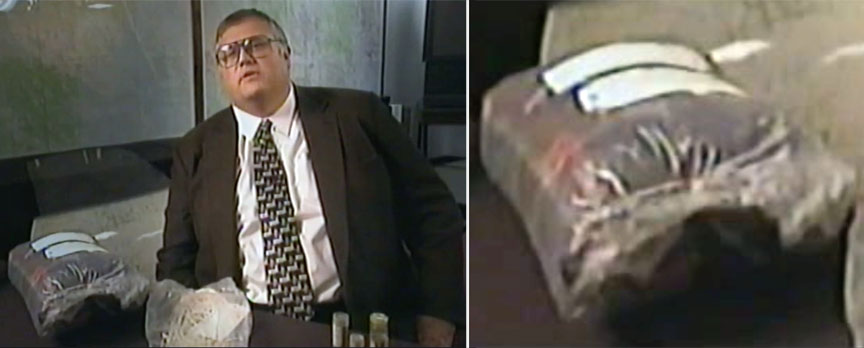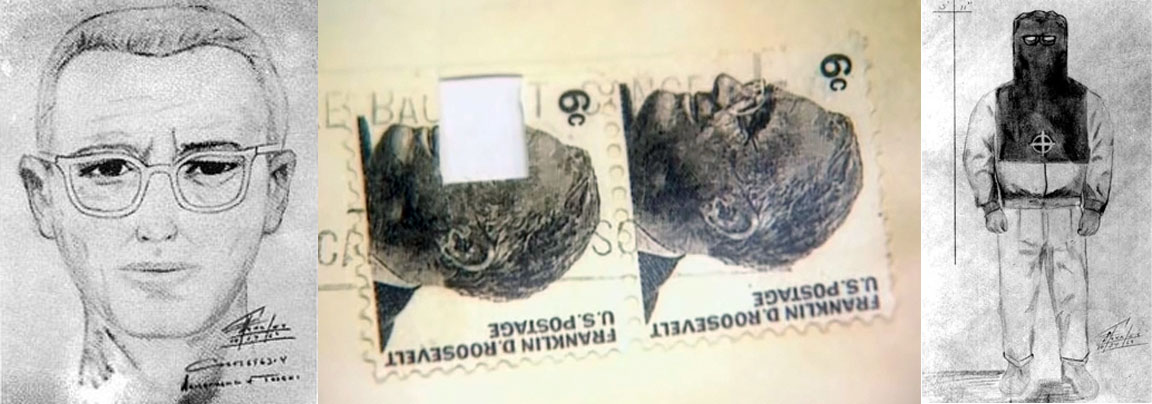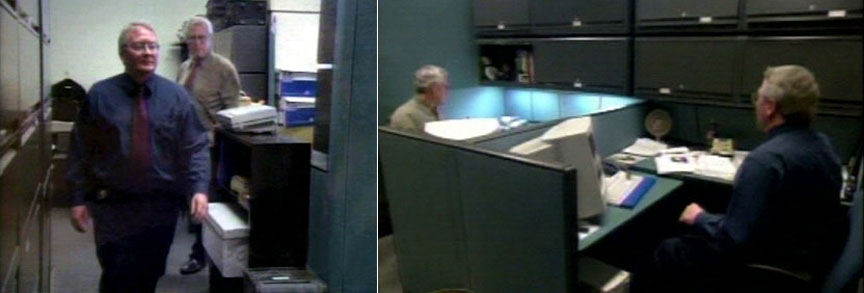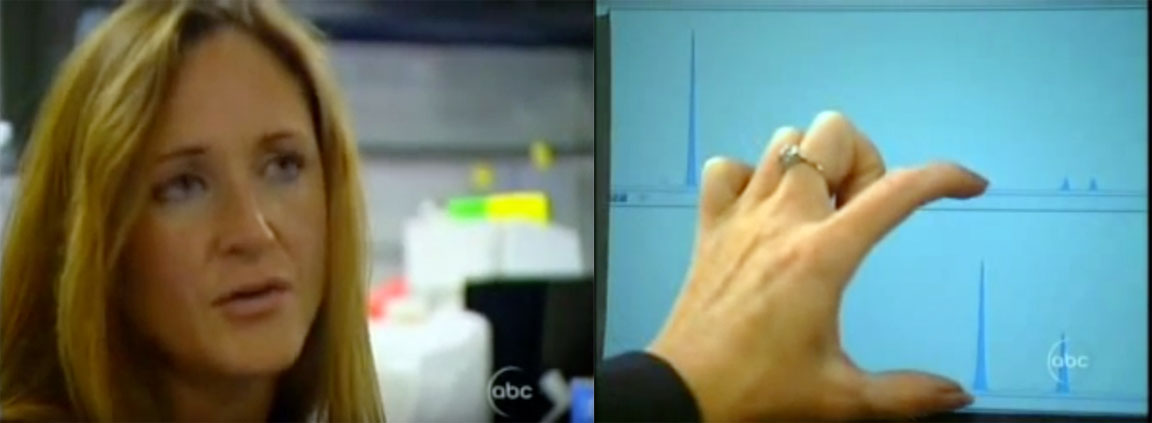Joseph James DeAngelo was probably very surprised when he was surrounded by police officers and arrested on April 24, 2018. The 72 year old resident of Citrus Heights, California, seemed rather ordinary but authorities held a press conference to announce that DNA evidence proved DeAngelo was the “Golden State Killer,” a prolific serial rapist and killer responsible for at least 12 murders, 50 sexual assaults, and more than 100 burglaries. DeAngelo may have believed that he had escaped justice for decades but a new method of DNA research has quickly become the greatest threat to elusive serial killers who remain at large.
In 2014, investigators in Arizona used an unconventional approach to identify the man responsible for murders attributed to the so-called “Canal Killer.” Two young women were murdered along a canal in Northwest Phoenix in the early 1990s. DNA linked the crimes but investigation failed to produce evidence implicating any viable suspects. Years later, detectives consulted forensic genealogist Colleen Fitzpatrick. Using a Y-STR, or a short tandem repeat of the Y-chromosome found only in men, Fitzpatrick compared the profile to information available on genealogy websites and narrowed the field of patterns to a spectrum of possible relatives of the killer. Fitzpatrick told investigators that the Canal Killer was most likely named “Miller.” Police reviewed the files and identified a suspect named Bryan Patrick Miller, previously arrested at the age of sixteen for stabbing a woman at a mall and again accused of stabbing a woman in Washington state. At the time of the murders in Phoenix, Miller lived in the area and frequently rode his bike along the canal where the bodies of the victims had been dumped. A DNA comparison proved that Miller’s DNA matched the DNA found on the victims of the Canal Killer. Miller was arrested in January 2015 and he denied any involvement in the crimes. He is currently in jail awaiting trial. [To learn more about the identification of the Canal Killer, read the article Shock Waves by Michael Butterfield in the fall 2017 anniversary issue of the magazine True Crime: Case Files.]
Authorities launched a new effort to identify the Golden State Killer using a similar method of DNA research. Retired Contra Costa County investigator Paul Holes had studied the crimes for years and was determined to catch GSK. Holes acknowledged that he had developed an “obsession” with the case, and he was a central character in the best-selling book about the crimes written by the late Michelle McNamara titled I’ll Be Gone in the Dark.

Retired Contra Costa County investigator Paul Holes and writer Michael Butterfield (ZodiacKillerFacts.com) visit two Zodiac crime scenes (History Channel series MYSTERYQUEST, 2009).
After exhausting other avenues of investigation, Holes turned to GEDmatch, a genealogy website with genetic information obtained from over 950,000 individuals. According to the Washington Post, Holes then narrowed his search to the killer’s great-great-great grandparents, and investigators then assembled a list of at least 25 family tree including thousands of relatives. From there, public records, census reports, obituaries and criminal databases helped narrow the search to relatives who fit the profile of GSK such as age, background, and whereabouts during the crimes. This information led investigators to Joseph James DeAngelo. Police placed DeAngelo under surveillance and retrieved an item he had discarded for DNA comparison. DeAngelo’s DNA matched the DNA recovered from GSK victims and he was arrested.
News of DeAngelo’s capture inspired praise of law enforcement as well as debate about the ethical and legal problems raised by the use of public genealogy information in criminal investigations. The success and identification of long-elusive murderers also inspired other investigators to use similar methods to identify other notorious serial killers. SFGate.com, The San Francisco Chronicle, and The Sacramento Bee reported that authorities in Napa, Vallejo, and San Francisco, California were evaluating evidence which could possibly be used to identify the infamous “Zodiac killer” who terrorized citizens of Northern California with a series of murders and bizarre letters from 1968 to 1974.
In the late 1990s, San Francisco police submitted the suspected “Zodiac” communications to the crime lab for forensic testing. Robert Graysmith, author of the book Zodiac, wrote a story published on the website APB.com titled “The Day They Thought They Nailed Zodiac.” Graysmith claimed that police obtained a “Zodiac” DNA sample which matched “the prime suspect,” convicted child molester and Vallejo resident Arthur Leigh Allen. Graysmith also claimed that SFPD Inspector Vince Repetto then stated that the match was a “false positive” result. According to Graysmith’s account, SFPD Lieutenant Tom Bruton explained that the suspected “Zodiac” DNA was obtained from a letter sent to the San Francisco Chronicle in April 1978. Several handwriting experts had concluded that this letter was a forgery and not an authentic Zodiac communication. In his article, Graysmith expressed his dismay that police had used the 1978 for DNA testing and wrote, “They had tested a hoax letter,” despite the fact that Graysmith was one of the few individuals who claimed that the April 1978 letter was authentic.
In 2000, SFPD Lt. Tom Bruton denied that any DNA testing had ever produced any “false positive” results which matched Allen or any other suspect. SFPD Inspector Vince Repetto also denied that any DNA testing had ever produced any “false positive” results which matched Allen or any other suspect. Repetto further denied that he had ever told Graysmith or anyone else about any such false positive results from DNA tests. A document from the SFPD crime lab from the time in question revealed that the lab was able to find some cells on various Zodiac letters, including the suspected 1978 letter. This document also stated that the San Francisco police department did not consider the 1978 letter to be an authentic Zodiac communication.

Retired San Francisco police inspector Vince Repetto and Lt. Tom Bruton in interviews for the Reelz Channel documentary ZODIAC: THE REAL STORY (2017).
During interviews for the recent Reelz channel documentary titled Zodiac: The Real Story, Vince Repetto and Tom Bruton described the investigation and efforts to obtain “Zodiac” DNA and exclude suspects. According to Repetto, suspected “Zodiac” DNA was obtained from a Zodiac communication. Repetto’s partner believed the DNA would implicate Allen. “We knew we had Arthur Leigh Allen’s DNA, and then we had DNA from one of the suspected letters.” The results of the DNA comparison were negative, and Allen’s DNA did not match the suspected Zodiac DNA. Repetto said his partner was “pretty upset it turned out not to be Allen.” Tom Bruton explained that the same DNA evidence was compared to other suspects, including Larry Kane. “We had compared handwriting and fingerprints with what we had in the crime lab, and there was no matches there. The last big hope was the DNA comparison.” The results of the DNA comparison were negative and Kane’s DNA did not match the suspected “Zodiac” DNA.
At the turn of the century, Inspectors Kelly Carroll and Mike Maloney were assigned to the Zodiac case. In an interview with this author in 2000, Carroll stated his belief that modern forensic science could identify the Zodiac killer. “If the Zodiac case is ever solved,” Carroll said, “it will be solved by someone in a white lab coat.” Carroll and Maloney submitted the Zodiac communications for further testing. The ABC television show Primetime documented work conducted by Dr. Cyndi Holt of the San Francisco police DNA lab. Envelopes and stamps were examined, and Holt stated that a partial genetic profile was obtained from a stamp, reportedly on an envelope sent in November 1969. The partial genetic profile could be used to exclude suspects but was not sufficient to conclusively identify any individual as the Zodiac.
In public interviews, Cyndi Holt and Kelly Carroll both expressed confidence in the “Zodiac” DNA partial profile, but some critics claimed that the entire DNA spectacle was staged for the media. Mike Maloney reportedly expressed some doubts about the methods used to obtain the DNA and questioned its value in eliminating suspects. Despite the alleged concerns about the evidence, the San Francisco police department announced that the suspected “Zodiac” DNA did not match suspect Arthur Leigh Allen. Allen’s accusers argued that the DNA was not sufficient to outweigh the so-called “mountain of circumstantial evidence” against the suspect, but no credible evidence linked Allen to the Zodiac crimes. Several years later, Vallejo police submitted evidence to a lab for testing, including two envelopes which contained some of the first letters sent by the killer in July 1969. The results reportedly revealed a partial genetic profile which was not sufficient to positively identify anyone as the Zodiac. This DNA profile did not match Arthur Leigh Allen.
In 2010, investigators at the Napa County Sheriff’s Office re-examined evidence in the Zodiac’s attack at Lake Berryessa, including a bottle found at the crime scene, a blood-stained blanket, pieces of plastic clothesline used to bind the victims, and the car door featuring a handwritten message left by the killer. Napa County Sheriff’s Sgt. Pat McMahon told San Francisco Chronicle reporter Kevin Fagen that the evidence was submitted to the state Department of Justice DNA lab in Richmond, California. According to The Sacramento Bee, a partial genetic profile was obtained from a mixture of DNA, but this profile could not be separated from the other DNA in the mixture and was not sufficient to identify the killer.

William White, Napa County Sheriff’s Office, with the blanket and clothesline from the Berryessa crime scene (CASE REOPENED, 1999).
In 2018, the Vallejo police department once again submitted the two early “Zodiac” envelopes for more forensic testing. According to Vallejo police Detective Terry Poyser, experts at the chosen lab were “confident” that DNA evidence could be obtained from the envelopes. Investigators in the other jurisdictions involved in the Zodiac case also re-examined other evidence with hopes that new methods might yield something which could identify the killer. The Napa County Sheriff’s Office and the San Francisco police department reviewed evidence in their cases for possible forensic testing. A complete DNA profile would be necessary in order to identify the Zodiac using the same methods used to identify the Golden State Killer. A partial profile would not be sufficient to narrow the spectrum of potential DNA candidates. The new testing could produce important evidence or a failure to discover DNA evidence would require investigators to identify the Zodiac using more traditional methods.
December 2018 will mark the 50th anniversary of the first “Zodiac” murders on Lake Herman Road in 1968. If the Zodiac is still alive, he may be watching the news about the arrest of Joseph DeAngelo with the growing fear that the next knock on his door may be cold case investigators armed with DNA evidence the killer left behind when he licked an envelope or stamp half a century ago.
Read more about the issues and potential problems in the search for new evidence in the article ZODIAC DNA: The Magic Bullet.
___________________________________
Copyright ZodiacKillerFacts.com
_______________________
Michael Butterfield is a writer and a recognized expert on the unsolved “Zodiac” crimes. He has served as a media source and consultant for news articles, television documentaries, the History channel series The Hunt for the Zodiac Killer, and director David Fincher’s major motion picture Zodiac. Michael Butterfield appears in the Zodiac documentary Case Reopened, the History Channel series MysteryQuest, the E! Canada series The Shocking Truth, and the Reelz channel documentary The Real Story of Zodiac. He is also a contributing author for True Crime: Case Files, True Crime Magazine, and the two volume collection of essays titled A History of Evil in Pop Culture.






